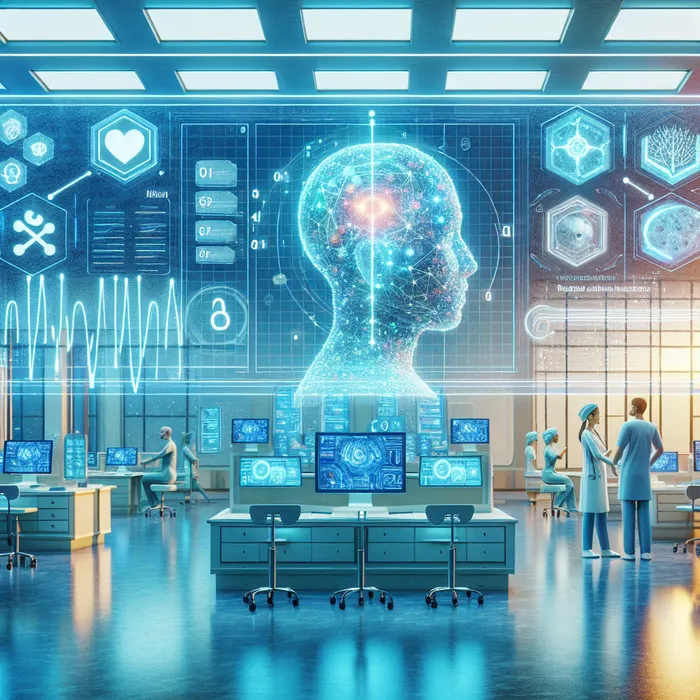Forget the stethoscope: China’s Agent AI Hospital takes healthcare into the digital age

Agent Hospital is a digital hospital launched in 2024 and built by researchers at Tsinghua University. Instead of human clinicians walking the wards, the system uses LLM-powered autonomous agents.
Image: Ron
Artificial Intelligence (AI) is no longer just a buzzword; it’s transforming industries at lightning speed, and healthcare is no exception. Among the latest breakthroughs, China has unveiled a fully virtual, AI-powered healthcare facility: the Agent AI Hospital.
This revolutionary concept is making waves globally, promising to reshape how we experience medical care. But is this the future we’ve been waiting for, or does it come with hidden challenges?
What is the Agent AI Hospital?
Agent Hospital is a digital hospital launched in 2024 and built by researchers at Tsinghua University. Instead of human clinicians walking the wards, the system uses LLM-powered autonomous agents.
AI simulates the entire healthcare journey, from patient registration and consultation to examination, diagnosis, treatment, and follow-up, using AI "doctors", "nurses" and even "patients".
The project’s technical backbone is a framework called MedAgent-Zero and a set of evolvable AI doctor agents trained through millions of simulated cases, according to Robotics and Automation magazine.
This system is supported by the Zijing AI Doctor, a high-performing AI network with 42 specialists trained to handle over 300 diseases across 21 clinical fields. These AI doctors are not just chatbots; they're capable of diagnosing, recommending treatments, and even planning interventions autonomously.
Using a database of 500,000 synthetic patient cases, with reported accuracy levels of over 93%. According to the research team, the system can treat as many as 10,000 patients in just a few days, a process that would take human doctors months or even years.
How does it work?
The Agent AI Hospital relies on advanced machine learning and natural language processing. These AI doctors analyse vast amounts of medical data to deliver accurate diagnoses while simulating real-world interactions with virtual patients.
The system operates in a closed-loop environment, meaning it trains itself by constantly evolving through simulations and real-world pilot programs.
According to Liu Yang, the head of the research team, this virtual environment not only enables patient treatment but also serves as a training ground for the next generation of medical professionals.
Medical students can practice procedures, diagnose conditions, and learn complex techniques without ever risking harm to real patients.
Key features of the AI Hospital
- Accessibility: AI hospitals could bridge gaps in underserved regions, providing care where human doctors are scarce. AI hospitals reduce the need for physical infrastructure, resulting in significant operational cost savings.
- Speed: Faster diagnoses and treatment plans reduce waiting times for patients.
- Precision: Machine learning ensures treatments are based on the latest data, increasing accuracy.
- Training Opportunities: Medical students can safely practice complex procedures in virtual environments, preparing them for real-world challenges. Efficiency: With the capacity to treat 3,000 patients daily, AI hospitals offer a solution to overcrowded healthcare systems.
But what are the drawbacks?
Despite its many advantages, the emergence of AI in healthcare also raises significant concerns. Ethical dilemmas loom large. Can a machine truly deliver compassionate care? Many patients may grapple with the uncertainty of entrusting their health to a non-human entity.
Furthermore, there are apprehensions regarding job displacement within the healthcare workforce, which could spark fears of widespread unemployment among medical professionals.
For many rural communities, this could be a life-changing experience. Picture a gogo in deep rural Eastern Cape who wakes up feeling unwell. The nearest clinic is miles away, transport is scarce, and there’s no one around to take her.
In that moment, getting medical help feels almost impossible, a reality faced by thousands of women in rural South Africa every day.
Instead of rushing to an overcrowded hospital, she logs into a virtual consultation with an AI doctor, who provides a diagnosis and treatment plan within minutes, granted. This is the potential reality China’s AI hospital promises.
China’s Agent AI Hospital is part of a larger movement to integrate AI into medicine worldwide. Countries like the US and Japan are also exploring AI applications, from robotic surgery to AI-assisted diagnostics.
In fact, Japan recently made headlines with its Mirai Ningen Sentakuki, a “human washing machine” aimed at revolutionising physical wellness.
According to "Shiba News", Tsinghua University is already implementing pilot programs at partner hospitals, including Beijing Tsinghua Changgung Hospital, that blend AI with real-world care in departments like ophthalmology, radiology, respiratory medicine, and general practice.
So far, it’s research-focused, but the groundwork for practical integration is forming fast.
There’s also an educational surge ahead, a wave of “AI-collaborative physicians” trained alongside and by virtual agents, poised for a new era of care.
China, however, is leading the charge with its bold investment of over $1.4 trillion by 2030 into AI development. This commitment highlights the country’s determination to redefine healthcare on a massive scale.